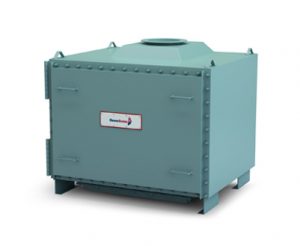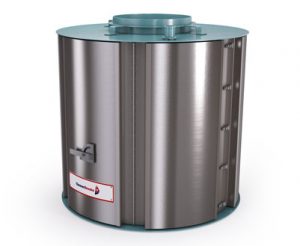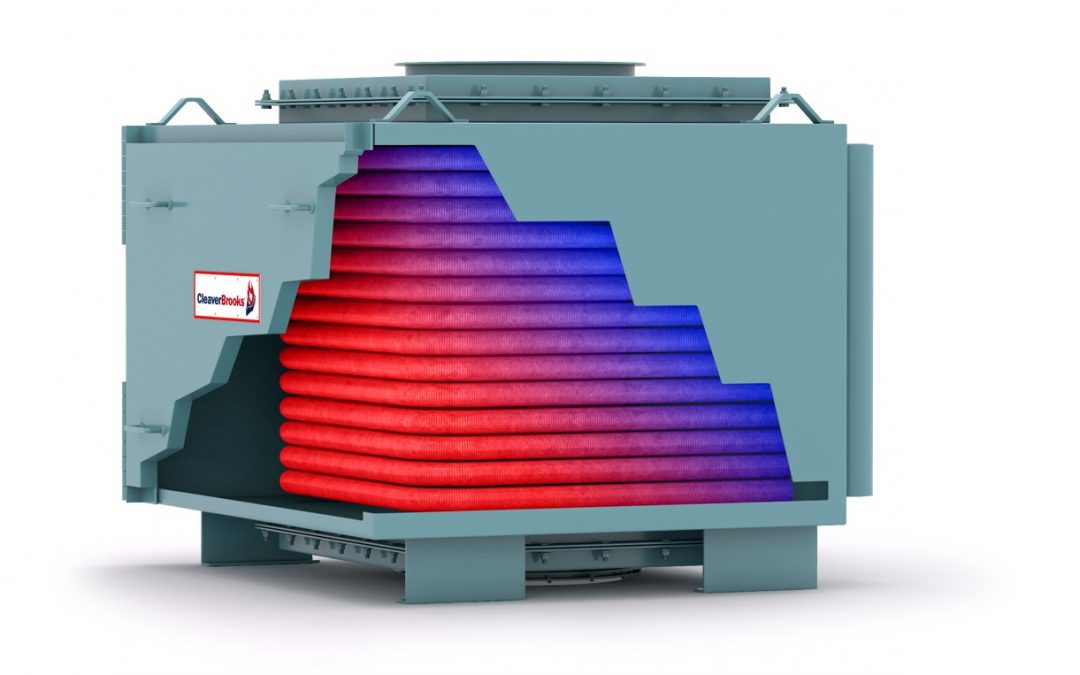To continue our conversation on economizers as our monthly product feature, it would be best to first explore a more initiatory question relating to energy: which type are you trying to recover?
It is important, when considering one’s options, to determine whether you stand to make the most significant gains from recovering sensible or latent heat. To be brief in review, sensible heat is that exchanged by a body, producing a measurable change to the temperature of the system, while leaving other variables untouched, like volume or pressure. For our purposes, we will use the lens of “state change.”
It is quite the opposite with regards to latent heat. Perhaps best conceptualized as hidden heat, it is exchanged without a measurable change in temperature until the entire thermodynamic system has changed state, such as steam to water. Latent heat can be a powerful tool for the process of heat recovery using a condensing economizer; exhaust, otherwise serving as a vehicle for wasted heat, cools to the dew point and condenses to a liquid, spurring the release of 970 BTU’s per pound of water.
The next logical step is to assess one’s operative needs and circumstances to determine which type of economizer makes sense to use. You will likely wish to opt for a condensing economizer if your establishment uses a considerable amount of make-up water at lower temperatures, or if there is a significant demand for process or domestic water. Being able to extract thermal energy from latent heat during condensation is an ideal way to effectively heat water for these applications. Indirect contact condensation (tubes running through the flue gas area) is generally used for process applications, while direct contact (water and flue gasses make direct contact on a packed steel bed) allows for high heat transfer and comparatively lower outlet temperatures around 140F to use for feedwater or space heating, etc. This is due to the fact that condensing economizers reduce exit flue gas temperatures.
Stack economizers, or traditional economizers, do not lend themselves to cold water applications, especially when the temperature in the stacks is too high for the dew point to realistically be reached. Moreover, condensing boilers like the Cleaver-Brooks ClearFire® line are condensing units in themselves. Therefore, it is much more likely that you will see a traditional stack economizer on a high temperature steam boiler than anything else, typically. Most importantly, selecting an economizer requires consideration of various factors and changes to (and during) system operation. The right economizer for a boiler system is determined case by case.
There are instances, however, where harnessing thermal energy from condensation can occur in high temperature steam applications. If the make-up water is cold enough, and flue gas temperatures lower due to decreased demand, the indirect contact between the water-filled tubes and stack flue gasses can cause the gas to fall below the dew point. Because this chemical composition is corrosive, it is critical to ensure that heat exchangers are constructed out of robust materials, such as stainless steel. But even stainless steel, despite is resistance to normal corrosion, is susceptible to stress cracking due to chlorides present in the water. Cannon Boiler Works’ Duplex stainless steel components for heat recovery units are superior in protecting against both of these threats to the longevity of tubes and heat exchangers.
There are a number of products available through Cannepp that, in sum, comprise an impressive catalogue of solutions to suit the needs of many different boiler systems, and can actually remedy many of the problems or constraints that dichotomize condensing and non-condensing products. This week, we take a look four of Cleaver-Brooks’ economizers and their relevant features.

The C-B CRE Stack Economizer accommodates all boiler design pressures and up to 2,200 HP

The C-B CCE Stack Economizer accommodates heavy fuel oil, all design pressures, and up to 250 HP
Cleaver-Brooks’ non-condensing stack economizers can fit boilers with horsepower ranging from below 250 and up to 2200. The larger CRE rectangular economizer can be tailored to feedwater, make-up water, hot water or process applications. The smaller CCE cylindrical economizer is a solution for space constraints; it is lightweight and compact, and can be used for all the same applications as the CRE. Both units feature convenient hinged stainless-steel access doors, and internal exhaust gas bypasses constructed of the same material, to protect the equipment should feedwater/process requirements drop. The gas bypass is also important in steam plants with exhaust stacks that need to stay above a certain temperature to prevent stack corrosion, opening a damper to allow hot gasses to prevent harmful condensation. Construction compliant with ASME code means the design and standards for manufacturing are second to none.

The C-B CX1 Condensing Economizer can preheat any cool liquid stream.

Ideal for larger boilers, the two stage CX2’s versatility translates to maximum cost savings
The C-B line of condensing economizers is equally impressive. The CX1 is a single stage condensing economizer that can preheat either make-up, process, or hot water by recovering waste heat from the stack. What is highly desirable in this model takes us back to our conversation on sensible and latent heat. The CX1 is able to recover thermal energy from both, while also possessing the ability to maintain water temperature (and thus the ability to capture latent heat during condensation) by activating the internal gas bypass system. The CX1 is a superb choice for systems that use a considerable amount of make-up water. The CX2 model is a two-stage, natural gas condensing economizer usable on boilers up to 2200 HP that has both a non-condensing and condensing section, allowing both the preheating of feedwater and the preheating of process or comfort related cool liquid streams simultaneously in steam applications. All gas side surfaces, condensate drains, and exhaust gas bypasses are 316-stainless steel to eliminate corrosion during condensation. The CX2 is a fantastic exercise in versatility. For example, a process plant could use both the non-condensing and condensing components of the CX2 to split its process water and make-up water heating 50/50.
Next week, an in-depth look at Cannon Boiler Works and their line of economizers that Cannepp represents.
Reference List:
Stack economizers
http://www.cleaverbrooks.com/products-and-solutions/heat-recovery/stack-economizer/index.aspx
Condensing economizers
http://www.cleaverbrooks.com/products-and-solutions/heat-recovery/condensing-economizer/index.aspx

